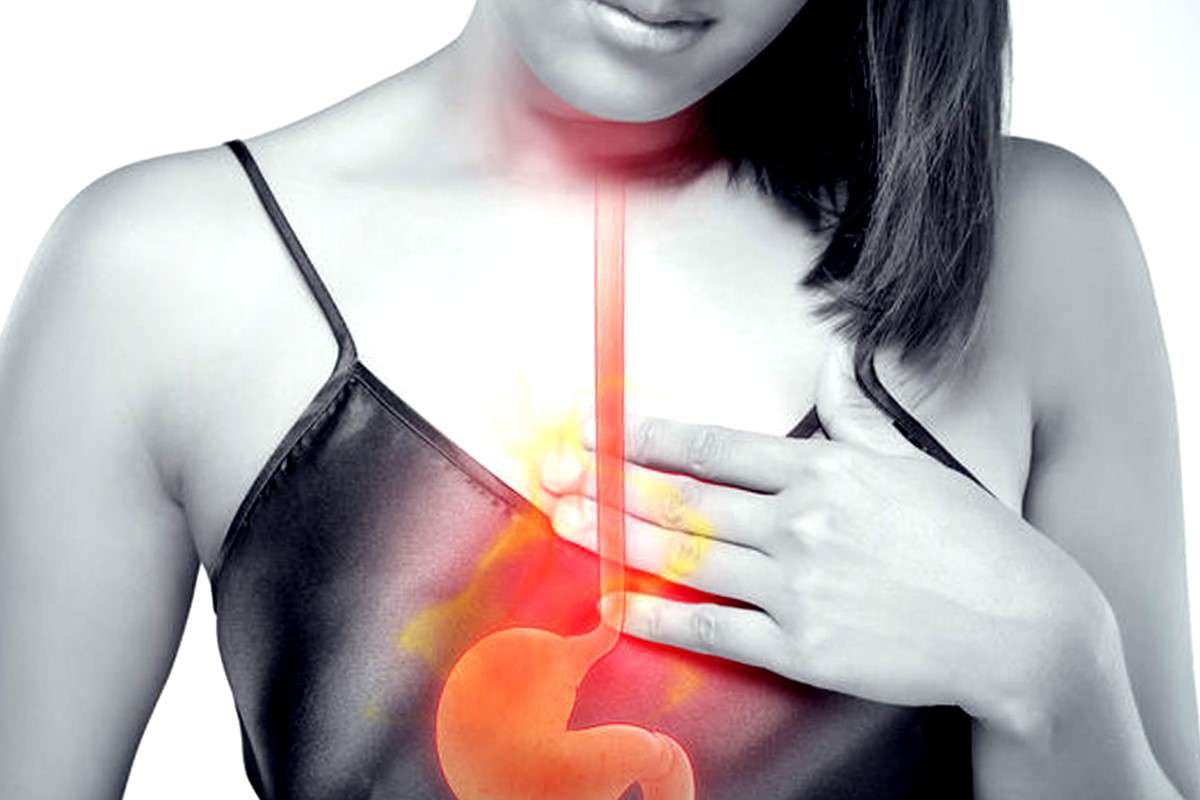
Gastro-oesophageal reflux: symptoms, diagnosis and treatment
Like a door that can no longer close completely: this is what can happen to our stomach in the case of gastro-oesophageal reflux
The acidic juices inside it escape and irritate the mucous membrane of the digestive tract, triggering the typical symptoms of the disorder.
When it occurs several times during the day and is associated with other complications, it is called gastroesophageal reflux disease (GERD).
Symptoms of gastro-oesophageal reflux disease
Typically manifested by a localised burning sensation in the chest or stomach.
The symptom becomes more annoying during the night when lying down.
In severe cases, the chest pain is so intense that it can be confused with an attack of angina pectoris.
Not only that, it can sometimes happen that the passage of gastric juices inside the oesophagus causes irritation of the mucous membranes of the respiratory tract and throat, leading to vocal cord disorders, with lowered voice, laryngitis, hoarseness, chronic cough and asthma.
Causes of gastro-oesophageal reflux
There may be a ‘malfunction’ of the gastro-oesophageal sphincter, the ‘gateway’ to the stomach.
When this valve does not function properly, stomach contents can flow upwards, irritating the oesophagus.
Another cause can be slow gastric emptying.
When we eat, food reaches the stomach where it can remain for a longer or shorter time.
The longer the food stays in the stomach, the greater the likelihood of gastro-oesophageal reflux.
There may also be problems with the motility of the oesophagus that complicate the descent of food from the mouth into the stomach.
Diagnosis
The diagnosis of reflux disease is mainly clinical.
Usually the doctor only detects the disorder after ruling out other pathological conditions such as heart problems.
If these findings are negative and the symptoms persist, treatment with antacid medication is started.
If the patient’s response is positive, no further tests are usually necessary.
If, on the other hand, symptoms persist or reappear at the end of therapy, further investigations such as oesophago-gastroduodenoscopy, pHmetry and oesophageal manometry should be performed.
Therapies
The treatment of reflux disease is based on lifestyle correction and drug therapy.
Prokinetic drugs, for instance, accelerate the time of emptying the stomach, preventing the onset of the disorder.
Protectors of the oesophageal mucosa, on the other hand, act like a shield for the oesophageal wall, protecting it from acid attack.
Then there are the so-called PPIs (proton pump inhibitors) and H2-receptor antagonists.
The mechanism of action of these drugs is very simple: by reducing the acidity of the gastric secretions, they prevent the stomach contents from corroding the oesophageal muscosa during reflux.
In the treatment of gastro-oesophageal reflux, diet plays an important role
Treatment involves the correction of certain eating habits and lifestyle, with the adoption of a light diet, characterised by four or five small meals a day and a reduction in stress that can accentuate the problem.
All this is to avoid complications.
Reflux, in fact, can cause chronic and sometimes irreversible damage to the mucous membrane of the oesophagus, which can lead to ulcers and bleeding.
The most common complication is oesophagitis, the most serious of which is Barrett’s oesophagus, a fairly rare precancerous condition that can lead to oesophageal cancer and on which continuous medical surveillance should be maintained.
Gastro-oesophageal reflux, follow these tips
There is evidence that certain foods and behaviours can promote reflux episodes because they lengthen the time it takes for the stomach to empty or because they are irritating.
Here are some tips and remedies.
Eat slowly, chewing the food well to limit the rise of the gastric content in the oesophagus.
Avoid alcoholic drinks, cocoa, tea, coffee, citrus fruits, carbonated drinks, tomato, mint and cigarette smoke.
Milk buffers the acidity of the stomach, but being high in fat can slow down digestion and, in the long run, promote the disorder.
Do not wear clothes that are too tight around the waist, and it is also better to avoid lying down immediately after eating, trying, if possible, to keep the upper body slightly elevated during the night’s rest.
Read Also:
Emergency Live Even More…Live: Download The New Free App Of Your Newspaper For IOS And Android
Straight Leg Raise: The New Manoeuvre To Diagnose Gastro-Oesophageal Reflux Disease
Gastroenterology: Endoscopic Treatment For Gastro-Oesophageal Reflux
Oesophagitis: Symptoms, Diagnosis And Treatment
Asthma, The Disease That Takes Your Breath Away
Gastroesophageal Reflux: Causes, Symptoms, Tests For Diagnosis And Treatment
Global Strategy For Asthma Management And Prevention
Paediatrics: ‘Asthma May Have ‘Protective’ Action Against Covid’
Esophageal Achalasia, The Treatment Is Endoscopic
Oesophageal Achalasia: Symptoms And How To Treat It
Eosinophilic Oesophagitis: What It Is, What The Symptoms Are And How To Treat It
Gastroesophageal Reflux: Causes, Symptoms, Tests For Diagnosis And Treatment
Irritable Bowel Syndrome (IBS): A Benign Condition To Keep Under Control
Long Covid, Study In Neurogastroenterology And Motility: Main Symptoms Are Diarrhoea And Asthenia
Symptoms And Remedies Of A Gastro-Oesophageal Reflux Cough
Gastro-Oesophageal Reflux Disease (GERD): Symptoms, Diagnosis And Treatment


